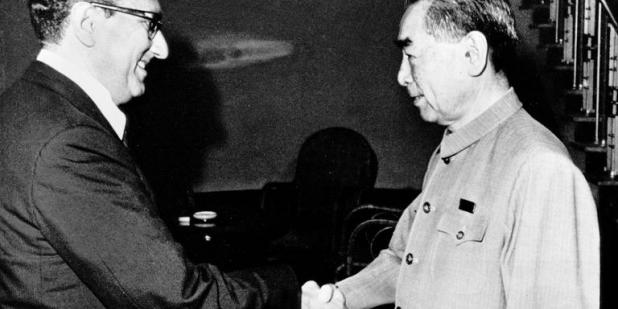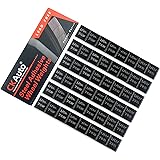Utopia Bedding Throw Pillows Insert (Pack of 2, White) - 18 x 18 Inches Bed and Couch Pillows - Indoor Decorative Pillows
$15.99 (as of April 16, 2024 20:52 GMT +00:00 - More infoProduct prices and availability are accurate as of the date/time indicated and are subject to change. Any price and availability information displayed on [relevant Amazon Site(s), as applicable] at the time of purchase will apply to the purchase of this product.)In 1971, US Secretary of State Henry Kissinger paid a secret but a historic visit to China. At that time, Pakistan was in the midst of a serious political crisis and the United States wanted to take advantage of the ideological and strategic gulf between China and the Soviet Union during the Cold War.
It was a time when general elections were held in Pakistan but government formation was being delayed and military action had begun in East Pakistan. Thousands of Bengalis were migrating from East Pakistan while the Mukti Bahini was also engaged in operations against the Pakistani army.
This is when the Soviet Union signed the Treaty of Peace, Friendship, and Cooperation with India. The agreement emphasized strategic co-operation and weakened India’s traditional claim to neutrality. The Soviet Union was probably also angry at Pakistan’s increasing inclination towards China.
But against all these circumstances and events, the United States was using Pakistan to play a key role in improving its relations with China.
Earlier, relations between the Soviet Union and China were strained in the wake of most of the events of the 1960s.
Western countries, and especially the United States, have been closely monitoring the global situation, but so far no one has tried to take advantage of the differences between the two communist governments, China and the Soviet Union.
Richard Nixon was the first American leader to start this work. Even before becoming president, he had stressed in an article the need to improve relations with China. After being elected President, in 1969, he sought the help of the then President of Pakistan, Yahya Khan, for secret contacts with China.
Details of how the secret trip was fully planned and how a delegation led by ‘fake Kissinger’ was sent to Murree in the air to keep it completely hidden from the eyes of the world It is important to know what the United States was using to communicate with China.
This was the time when general elections were held in Pakistan but government formation was delayed and military action had begun in East Pakistan.
Taiwan’s critical issue
Meanwhile, the United States also took into confidence Taiwanese leader Chiang Kai-shek, who was unhappy with US efforts to reach out to the People’s Republic of China. President Nixon assured them that their importance would not be diminished, but that “they will fail to fulfill their responsibilities if they do not reduce the chances of a Sino-US confrontation.”
In October, President Yahya and President Nixon have another meeting in which Nixon discovers Yahya’s plan to visit China. Nixon said he wanted to establish contact with China through a third country.
The contacts were also conducted through Romanian President Nikolai Ceausescu. Kissinger met with President Ceausescu and told him that the United States wanted to establish direct contact with China and that it did not want a confrontation with China. Ceausescu promised to deliver the US message to China.
Meanwhile, Agha Hilali, Pakistan’s ambassador, told Kissinger in December 1970 that President Yahya had conveyed President Nixon’s message to Chinese leaders. “Chairman Mao and Vice Chairman Lin Biao support the attempt to negotiate with the United States,” Chou En-lai told (President Yahya).
However, Zhou Enlai told President Yahya that the Taiwan issue was a central issue for China. He said China would welcome any attempt to negotiate the withdrawal of US troops from Taiwan. Kissinger asked China to send a verbal message for talks.
Henry Kissinger indicated that the United States was ready to discuss many other issues with China, including Taiwan. However, the United States will gradually reduce its forces from East Asia as tensions erupt.
Nixon’s announcement
That evening, President Nixon announced at a press conference that the United States would continue its efforts to improve relations with China.
“Looking to a long-term future that will eventually lead to normal relations with China, we will continue our efforts to reduce trade and travel restrictions in order to establish ties with Communist China.”
In this context, Edgar Snow, an American journalist with left-wing views, visited China in early 1971. These are the same American journalists who have previously written a book on the history of the Chinese Communist Party and are sympathetic to Communist China.
China’s encouraging response
In April 1971, the same year, Pakistani President Yahya Khan sent a message from Chinese Prime Minister Zhou Enlai to the United States. The message reached Henry Kissinger on April 27, in which the Chinese leader said the Chinese government would welcome the US envoy for talks.
Since then, preparations for direct contacts and related talks between the two countries have gained momentum. The US government did not want to reassure China about Taiwan, but did not want to stop efforts to improve relations.
President Nixon instructed his adviser, Kissinger, to prepare to travel to China. But he told Kissinger not to show any leniency about Taiwan when talking to Chinese leaders. “Nowhere do the Chinese realize that the United States is ready to make a deal with Taiwan.”
On June 19, 1971, Agha Hilali sent a message to Kissinger that he had been told by President Yahya Khan that arrangements had finally been made to go to China and that he had assured our friend (Nixon) that he was “foolproof”. In the same message, Kissinger was asked to arrive in Pakistan on July 8.
However, Henry Kissinger had a meeting with Agha Hilali on June 21 to learn the details of the arrangements and to reassure him that the mission was confidential. He also talked to Agha Hilali about the plane he was going to take to China.
The next day, Kissinger briefed US Ambassador to Pakistan Joseph Farland on his secret visit and said that the US Secretary of State would be taken into confidence in due course. Kissinger first gave details of his trip upon arrival in Pakistan and then stated that he would arrive in Pakistan on July 8, and would apparently leave on the 10th.
According to documents released by the US National Security Archives, a message came from the Islamabad embassy in late June that arrangements had been made. According to him, Kissinger will return on July 11 and then he will leave for Paris
The embassy’s letter also provided more details of the secret trip. The principal traveler (Kissinger) will be wearing black glasses and a hat. He will be accompanied by (Winston) Lord, Holdridge, Smite and two secret agents during the “side trip” (trip to China).
(Henry Kissinger’s staff officer) Saunders will stay in Rawalpindi. Another staff officer, Helprin, will travel to a mountainous location (Murree) with the US ambassador to Islamabad, Farland, and a third secret agent, while Saunders will stay in a guesthouse.
The two girls in the party, Diane Mathews and Florence Guerrero, will be housed in separate safe houses. Until the party arrives in Islamabad, all its members, except for three Secret Service agents, who will be at the embassy, will be kept informed.
The letter also said that Farland should be persuaded that the embassy doctor should not accompany him to the hill station, and that the best possible way was for helpers to call Saunders from their field station. And say the principal traveler is resting and he wants to be alone and will call the doctor if needed.
Zafar Hilali, the son of Agha Hilali, who is also a diplomat himself, says that when Kissinger was leaving for a visit to China, a fake Kissinger was sent to the hill station (Murree) at the same time to confirm the impression. It turned out that they were going to Murree for rest, not on a secret mission.
In addition, Boeing mentioned the travel facilities and security arrangements and also said that when the plane lands at Chaklala Airport on July 11, the party will be taken around the guest house to give this impression. That they came from a mountainous place.
Principal Traveler (Kissinger) will then meet with the President, after which he will leave for the airport, from where his plane will fly to Paris. Everything went according to plan. And the historic tour was a success.
After returning to China, Kissinger arrived in Washington DC via Paris, and then on July 15, President Nixon issued a statement about Kissinger’s secret mission to China.
Henry Kissinger visited China twice in 1971, once in July and again in October. On behalf of China, Prime Minister Zhou Enlai took part in the talks with Kissinger. At the beginning of the talks, the two disagreed on the issue of Taiwan, but Kissinger acknowledged China’s position.
As a result of this meeting, Henry Kissinger also had some successful talks with China on important issues regarding Vietnam, East Asia and Japan. It also laid the groundwork for a consensus with China against the Soviet Union.
The visit of any senior US official to China was made possible through Pakistan’s mediation, and at the behest of President Nixon, Pakistani President Yahya Khan played a key role in negotiating with Chinese leaders through his influence. Convinced, although in these circumstances the Chinese also wanted relations with the Americans.
Pakistan’s role in US-China relations, its secret diplomacy and confidence-building is highly appreciated. After this visit, the emerging power of the communist bloc was divided and the communist bloc gradually began to weaken.
What did Pakistan, which played a key role in arranging this secret mission, get in return for this service? It remains to be seen. During this secret US diplomacy, the Pakistani military was engaged in military operations in East Pakistan and at the same time India was engaged in war preparations against Pakistan with the help of the Soviet Union.
This covert mission and its strategic importance are acknowledged by all experts in international affairs, but most Western analysts have sharply criticized Nixon and Kissinger for their silence on Pakistani military operations in East Pakistan.
According to Zafar Hilali, Nixon had specially thanked his father Agha Hilali in a letter of thanks to President Yahya. “Nixon was so praised that my father edited his letter and the letter was rewritten. Imagine a Pakistani ambassador correcting a draft of a US president’s letter.
Pakistani diplomat Zafar Hilali says Nixon’s gratitude cannot be considered enough unless he is convinced that Indira Gandhi wanted to conquer West Pakistan, and Nixon says no such thing is allowed. Can be given.
However, it will always be controversial in history whether the United States, after using Pakistan, rewarded the Pakistani military for ignoring alleged crimes in East Pakistan or preventing Soviet-backed India from occupying West Pakistan.




